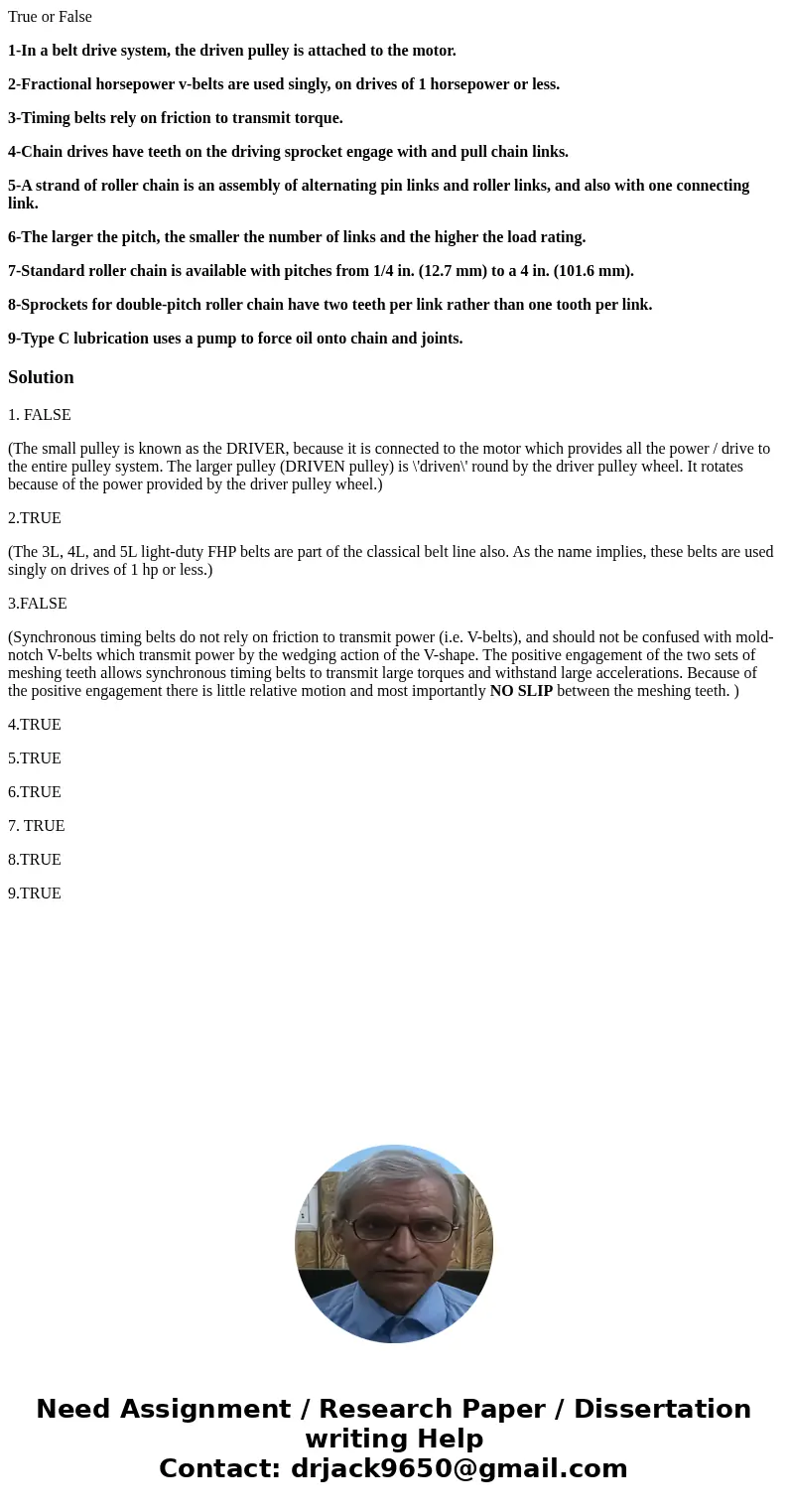True or False 1In a belt drive system the driven pulley is a
True or False
1-In a belt drive system, the driven pulley is attached to the motor.
2-Fractional horsepower v-belts are used singly, on drives of 1 horsepower or less.
3-Timing belts rely on friction to transmit torque.
4-Chain drives have teeth on the driving sprocket engage with and pull chain links.
5-A strand of roller chain is an assembly of alternating pin links and roller links, and also with one connecting link.
6-The larger the pitch, the smaller the number of links and the higher the load rating.
7-Standard roller chain is available with pitches from 1/4 in. (12.7 mm) to a 4 in. (101.6 mm).
8-Sprockets for double-pitch roller chain have two teeth per link rather than one tooth per link.
9-Type C lubrication uses a pump to force oil onto chain and joints.
Solution
1. FALSE
(The small pulley is known as the DRIVER, because it is connected to the motor which provides all the power / drive to the entire pulley system. The larger pulley (DRIVEN pulley) is \'driven\' round by the driver pulley wheel. It rotates because of the power provided by the driver pulley wheel.)
2.TRUE
(The 3L, 4L, and 5L light-duty FHP belts are part of the classical belt line also. As the name implies, these belts are used
singly on drives of 1 hp or less.)
3.FALSE
(Synchronous timing belts do not rely on friction to transmit power (i.e. V-belts), and should not be confused with mold-notch V-belts which transmit power by the wedging action of the V-shape. The positive engagement of the two sets of meshing teeth allows synchronous timing belts to transmit large torques and withstand large accelerations. Because of the positive engagement there is little relative motion and most importantly NO SLIP between the meshing teeth. )
4.TRUE
5.TRUE
6.TRUE
7. TRUE
8.TRUE
9.TRUE

 Homework Sourse
Homework Sourse